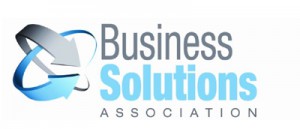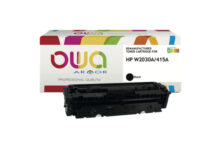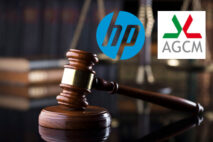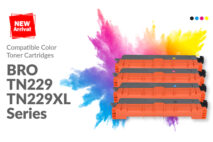Last week, the Business Solutions Association (BSA) announced it is looking for feedback from the remanufacturing industry and the public on a proposed draft standard that would define a remanufactured cartridge.
The BSA (www.businesssolutionsassociation.com) describes itself as a trade association that represents manufacturers, wholesalers, and manufacturer representatives in the business product and related industries. The Association has published a draft standard defining remanufactured cartridges (09-13 Defining a Remanufactured Cartridge).
Now, the firm is asking interested parties to review the draft and submit comments before the closing date of October 22 at 5 p.m. EST, using a comment form. The group says that after reviewing comments and revising as necessary, its goal is to publish a final standard this November.
The draft standard itself seeks to establish and maintain definitions of remanufactured ink or toner cartridges and differentiate these products from alternatives, such as newly manufactured, non-OEM cartridges. This, says the BSA, will benefit end users and also “protect wholesalers, dealers and resellers from selling cartridges that violate various laws and General Exclusion Orders.”
The proposed definition is as follows:
A remanufactured ink or remanufactured toner cartridge is defined as: an original OEM cartridge that has been previously used and the marking substance consumed, and then is subsequently collected, inspected, cleaned, had new or reconditioned parts installed, re-filled with ink or toner, and quality tested so that its capability to print has been restored.

The BSA is calling for comments on a standard that proposes a definition for a remanufactured cartridge
The draft standard seeks to deter the practice of referring to remanufactured cartridges with other terms such as replacement, reconditioned, refurbished, rebuilt, compatible, new compatible, newly remanufactured, newly manufactured, newly built, newly refreshed, new build, new plastic, factory fresh, non-OEM, and OEM compatible.
The proposed standard also points out that so as not to infringe under the first-sale doctrine in the United States, “the original and empty OEM cartridge must have been collected from first users in the United States.” In addition, the standard outlines how cartridges should be marketed and described on U.S. General Service Administration (GSA) Quality Assurance forms.
Good Idea But …
The language used today to describe non-OEM cartridges is confusing, sometimes deliberately so. Some less-than-scrupulous firms marketing clones have occasionally sought to co-opt the quality and environmental benefits associated with high-quality remans and described their products as remanufactured.
The industry is well aware it has a terminology problem. While neither effort was billed as a standards-development effort, the European Toner and Inkjet Remanufacturers Association (ETIRA) released a document called “Guide to Clones” over a year ago (see “ETIRA Publishes Guide to Clones”). In this guide, ETIRA spelled out various types of non-OEM cartridges and the risks each type posed of infringing intellectual property rights. The International Imaging Technology Council (Int’l ITC), too, has recognized that the multitude of terms used in the industry poses a problem. Earlier this year, the Int’l ITC adopted a resolution that its members will refrain from trading in cloned cartridges (see “Int’l ITC Adopts Resolution on Clones”), and this resolution defined various classes of cartridges, including legitimate remanufactured cartridges; counterfeits; new, clone cartridges; and new, remanufactured cartridges. Clearly, the industry is using a huge smorgasbord of terms to describe what is currently being offered on the marketplace, and if it is confusing to those in the industry, it is even more so for your average end user who simply wants to buy a cost-effective, quality cartridge for their printer.
We see a standard defining remanufactured cartridges versus other types of cartridges as having the potential to be highly beneficial for both the industry and end users. The problem is in getting the industry to buy into the standard and use the terminology, however it is ultimately defined, as prescribed.
It is not as if the industry lacks standards. The International Imaging Technology Council (Int’l ITC) has worked to spread the use of the Standardized Test Methods Committee (STMC) symbol to let customers know cartridges have been tested to specific standards. Companies claiming STMC certification must have employees trained by an authorized trainer in standardized test methods, attest to using these test methods, and purchase the correct test equipment. The Int’l ITC administers the program and looks to prevent unlawful misuse of the program and its logos.
To paraphrase William Shakespeare, “Misuse. Ay, there’s the rub.” The problem we foresee for the BSA is that certain manufacturers and resellers will blithely ignore whatever standard terminology is defined for third-party cartridges—that is, if they are even aware that a standard has been developed. Still, any effort to clarify and standardize third-party cartridge terminology is a good thing, and we would like to see the BSA succeed in promoting use of the standard and encouraging the industry to adopt more standard terminology for aftermarket supplies. However, we suspect that a fragmented worldwide industry, lack of knowledge about the standard, and the proverbial few bad apples determined to spoil the bunch will prevent a day where remans are simply labeled as remanufactured and new-builds are simply labeled as compatibles, with no potential confusion between the two.







1 Comment
What if ITC does not?
Other than “claiming” certification, isn’t a company supposed to renew certification? If they are not on the ITC companies list, do I assume that they are lying?
Since the industry went through the through the trouble to create a standard, why isn’t the industry enforcing it?